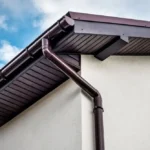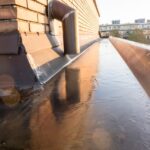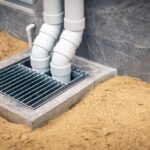When it comes to maintaining your home, knowing how to replace roof drains is crucial. Roof drains are vital in preventing water damage by directing rainwater away from your roof. If you notice leaks or water pooling, it might be time to replace your roof drains. Replacing roof drains is not just about stopping leaks; its about safeguarding your homes structure. In this guide, we’ll walk you through the process of replacing roof drains efficiently and safely. With the right tools and understanding, you can manage this task with confidence.

Understanding Roof Drains
Before diving into the replacement process, its important to understand what roof drains are and how they function. Roof drains are designed to collect and divert rainwater from flat or low-slope roofs to prevent water accumulation that can lead to leaks and structural damage.
Types of Roof Drains
There are several types of roof drains, including internal, external, and scupper drains. Internal drains are installed within the roof, external drains are connected to gutters, and scupper drains are installed at the roof’s edge to direct water away.
Signs You Need to Replace Your Roof Drains
Recognizing when to replace roof drains is crucial. Signs include persistent leaks, visible rust or damage, and water pooling on the roof. Regular maintenance checks can help spot these issues early.
Tools and Materials Needed
To replace roof drains, gather the following tools and materials: a ladder, screwdriver, new roof drain, sealant, and safety gear. Having the right tools ensures the process goes smoothly.
Safety Precautions
Always prioritize safety when working on a roof. Use a sturdy ladder, wear non-slip shoes, and consider using a safety harness, especially on steep roofs.
Steps to Replace Roof Drains
1. Remove the Old Drain
Begin by removing the old roof drain. Use a screwdriver to detach it and carefully lift it out. Dispose of the old drain properly.
2. Clean the Area
Thoroughly clean the area around the drain opening. Remove debris, old sealant, and any dirt to ensure a clean surface for the new drain.
3. Install the New Drain
Place the new drain into the opening. Secure it firmly using screws, ensuring it is tightly fitted to prevent leaks.
4. Seal the Edges
Apply a generous amount of sealant around the edges of the new drain. This step is crucial to prevent water from seeping through.
Testing the New Drain
Once installed, test the new drain. Pour water around the drain to check for leaks. If there are no leaks, the installation is successful.
Maintenance Tips
To ensure longevity, perform regular checks on your roof drains. Remove debris and leaves that might block water flow. For more detailed tips, visit roof drainage sealing tips.
Common Mistakes to Avoid
Avoid common mistakes such as improper sealing or choosing the wrong type of drain. Always ensure the drain is suitable for your roof type.
When to Call a Professional
If you’re uncertain about replacing roof drains yourself, or if your roof is particularly high or steep, consider hiring a professional. They have the expertise to handle the task safely and efficiently.
Benefits of Proper Drainage
Proper drainage prevents water damage, extends the roofs lifespan, and enhances your homes overall structural integrity. Learn more about the benefits of good drainage here.

FAQs
1. How often should I check my roof drains?
You should check your roof drains at least twice a year, especially before and after the rainy season.
2. Can I replace roof drains myself?
Yes, with the right tools and safety precautions, you can replace roof drains yourself. However, if you’re unsure, consult a professional.
3. What is the cost of replacing roof drains?
The cost varies based on the type of drain and labor involved. DIY replacement can save costs, but professional services provide assurance and expertise.
This article contains affiliate links. We may earn a commission at no extra cost to you.







